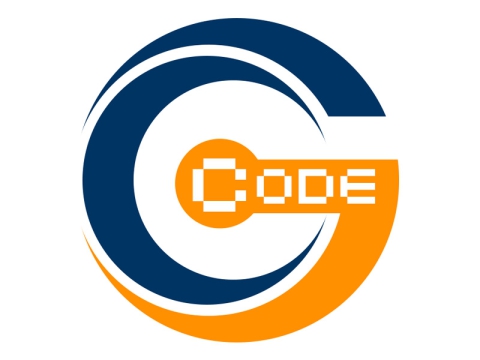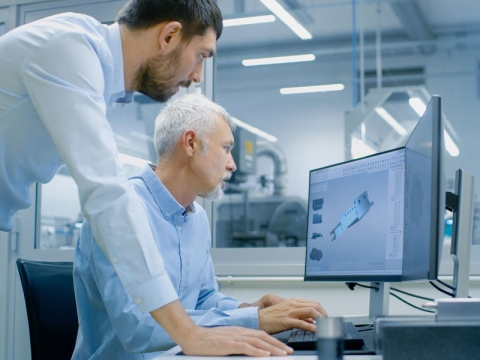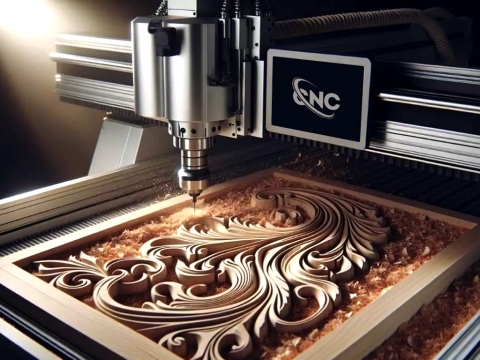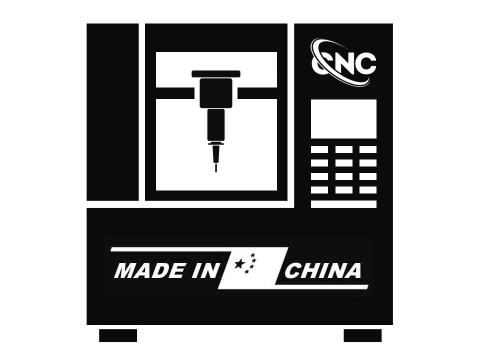The Rules for Choosing CNC Machine Tools
Tool life is closely related to cutting volume. When formulating cutting parameters, a reasonable tool life should be selected first, and the reasonable tool life should be determined according to the optimization goal. Generally divided into two types: the highest productivity tool life and the lowest cost tool life. The former is determined according to the goal of the least single-piece labor hours, and the latter is determined according to the goal of the lowest process cost.
The following points can be considered when choosing the tool life according to the complexity of the tool, manufacturing and sharpening costs. The life of complex and high-precision tools should be higher than that of single-edge tools. For machine-clamped indexable tools, due to the short tool change time, in order to give full play to its cutting performance and improve production efficiency, the tool life can be selected to be lower, generally 15-30min. For multi-tool machine tools, modular machine tools and automated machining tools where tool installation, tool change and tool adjustment are more complicated, the tool life should be higher, and the reliability of the tool should be ensured. When the productivity of a certain process in the workshop limits the increase in the productivity of the entire workshop, the tool life of the process should be selected lower. When the cost of the whole plant per unit time of a certain process is relatively large, the tool life should also be selected Lower. When finishing large parts, in order to ensure that at least one pass is completed and to avoid changing the tool in the middle of cutting, the tool life should be determined according to the accuracy of the part and the surface roughness. Compared with ordinary machine tool processing methods, CNC machining puts forward higher requirements on cutting tools. It not only requires good quality, high precision, but also requires dimensional stability, high durability, and easy installation and adjustment. Meet the high efficiency requirements of CNC machine tools. The selected tools on CNC machine tools often adopt tool materials suitable for high-speed cutting (such as high-speed steel, ultra-fine-grained carbide) and use indexable inserts.
CNC Machine Tools for Turning
The commonly used CNC turning tools are generally divided into three categories: forming turning tools, pointed turning tools, arc turning tools and three types. Forming turning tools are also called prototype turning tools. The contour shape of the processed parts is completely determined by the shape and size of the turning tool blade. In CNC turning processing, common forming turning tools include small radius arc turning tools, non-rectangular turning tools and thread tools. In CNC machining, the forming turning tool should be used as little as possible or not. The pointed turning tool is a turning tool characterized by a straight cutting edge. The tool tip of this type of turning tool is composed of linear main and secondary cutting edges, such as 900 internal and external turning tools, left and right face turning tools, grooving (cutting) turning tools, and various external and internal cutting edges with small tool tips. Hole turning tool. The selection method of the geometric parameters of the pointed turning tool (mainly the geometric angle) is basically the same as that of ordinary turning, but the characteristics of CNC machining (such as machining route, machining interference, etc.) should be fully considered, and the tool tip itself should be considered. strength.
The second is the arc-shaped turning tool. The arc-shaped turning tool is a turning tool characterized by an arc-shaped cutting edge with a small roundness or linear profile error. Each point of the arc edge of the turning tool is the tip of the arc-shaped turning tool. Accordingly, the tool position point is not on the arc, but on the center of the arc. The arc-shaped turning tool can be used for turning inner and outer surfaces, and is especially suitable for turning various smooth connection (concave) forming surfaces. When selecting the arc radius of the turning tool, it should be considered that the arc radius of the cutting edge of the two-point turning tool should be less than or equal to the minimum curvature radius on the concave contour of the part, so as to avoid processing dryness. The radius should not be too small, otherwise it will not only be difficult to manufacture, The turning tool may be damaged due to the weak tip strength or poor heat dissipation capacity of the tool body.
CNC Machine Tools for Milling
In CNC machining, flat-bottomed end mills are commonly used for milling the inner and outer contours of plane parts and the milling plane. The empirical data of the relevant parameters of the tool are as follows: First, the radius of the milling cutter RD should be less than the minimum radius of curvature Rmin of the inner contour surface of the part, generally RD= (0.8-0.9) Rmin. The second is the processing height of the part H< (1/4-1/6) RD to ensure that the knife has sufficient rigidity. Third, when milling the bottom of the inner groove with a flat-bottomed end mill, because the two passes of the groove bottom need to be overlapped, and the radius of the bottom edge of the tool is Re=Rr, that is, the diameter is d=2Re=2(Rr). Take the tool radius as Re=0.95 (Rr). For the processing of some three-dimensional profiles and contours with variable bevel angles, spherical milling cutters, ring milling cutters, drum milling cutters, tapered milling cutters and disc milling cutters are commonly used.
Most of the CNC machine tools use serialized and standardized tools. For tool holders and tool heads such as indexable machine-clamped external turning tools and face turning tools, there are national standards and serialized models. For machining centers and automatic tool changers Machine tools and tool holders have been serialized and standardized. For example, the standard code of the tapered tool system is TSG-JT, and the standard code of the straight tool system is DSG-JZ. In addition, for the selected tool, Before use, the tool size needs to be strictly measured to obtain accurate data, and the operator inputs these data into the data system, and completes the processing process through program call, thereby processing qualified workpieces.
The Tool's Point
From what position does the tool start to move to the specified position? So at the beginning of the program execution, the position where the tool starts to move in the workpiece coordinate system must be determined. This position is the starting point of the tool relative to the workpiece when the program is executed. So it is called the program starting point or starting point. This starting point is generally determined by tool setting, so this point is also called tool setting point. When compiling the program, choose the position of the tool setting point correctly. The principle of setting the tool setting point is to facilitate numerical processing and simplify programming. It is easy to align and check during processing; the processing error caused is small. The tool setting point can be set on the machined part, on the fixture or on the machine tool. In order to improve the machining accuracy of the part, the tool setting point should be set as far as possible on the part's design basis or process base. In actual operation of the machine tool, the tool position point of the tool can be placed on the tool setting point by manual tool setting operation, that is, the coincidence of "tool position point" and "tool setting point". The so-called "tool location point" refers to the positioning datum point of the tool. The tool location point of the turning tool is the tool tip or the center of the tool tip arc. The flat-bottomed end mill is the intersection of the tool axis and the bottom of the tool; the ball-end mill is the center of the ball, and the drill is the point. Manual tool setting operation has low precision and low efficiency. Some factories use optical tool setting mirrors, tool setting instruments, automatic tool setting devices, etc. to reduce tool setting time and improve tool setting accuracy. When the tool needs to be changed during processing, the tool change point should be specified. The so-called "tool change point" refers to the position of the tool post when it rotates to change the tool. The tool change point should be located outside the workpiece or fixture, and the workpiece and other parts should not be touched during tool change.
The Machining Data
In NC programming, the programmer must determine the machining data for each process and write it in the program in the form of instructions. Cutting parameters include spindle speed, back-machining data and feed speed. For different processing methods, different cutting parameters need to be selected. The selection principle of the machining data is to ensure the machining accuracy and surface roughness of the parts, give full play to the cutting performance of the tool, ensure reasonable tool durability, and give full play to the performance of the machine tool to maximize productivity and reduce costs.
1. Determine the spindle speed.
The spindle speed should be selected according to the allowable cutting speed and the diameter of the workpiece (or tool). The calculation formula is: n=1000 v/7 1D where: V is the cutting speed, the unit is m/m movement, which is determined by the durability of the tool; N is the spindle speed, the unit is r/min, and D is the workpiece diameter or Tool diameter in mm. For the calculated spindle speed N, the speed that the machine tool has or is close to should be selected at last.
2. Determine the feed rate.
Feed speed is an important parameter in the cutting parameters of CNC machine tools, which is mainly selected according to the machining accuracy and surface roughness requirements of the parts and the material properties of the tools and workpieces. The maximum feed rate is limited by the rigidity of the machine tool and the performance of the feed system. The principle of determining the feed rate: When the quality of the workpiece can be guaranteed, in order to improve production efficiency, a higher feed rate can be selected. Generally selected within the range of 100-200mm/min; when cutting, processing deep holes or processing with high-speed steel tools, a lower feed speed should be selected, generally within the range of 20-50mm/min; when the processing accuracy, the surface When the roughness requirement is high, the feed speed should be selected smaller, generally in the range of 20-50mm/min; when the tool is empty, especially when the long distance "returns to zero", you can set the machine CNC system settings The maximum feed rate.
3. Determine the depth of cut.
The depth of cut is determined by the rigidity of the machine tool, workpiece and cutting tool. When the rigidity allows, the depth of cut should be equal to the machining allowance of the workpiece as much as possible, which can reduce the number of passes and improve production efficiency. In order to ensure the quality of the machined surface, a small amount of finishing allowance can be left, generally 0.2-0.5mm. In short, the specific value of the machining data should be determined by analogy based on the machine performance, related manuals and actual experience.
At the same time, the spindle speed, the depth of cut and feed speed can be adapted to each other to form the best cutting parameters.
The machining data is not only an important parameter that must be determined before machine tool adjustment, but also whether its value is reasonable or not has a very important influence on processing quality, processing efficiency, and production cost. The so-called "reasonable" machining data refers to the machining data that makes full use of tool cutting performance and machine tool dynamic performance (power, torque) to obtain high productivity and low processing cost under the premise of ensuring quality.





